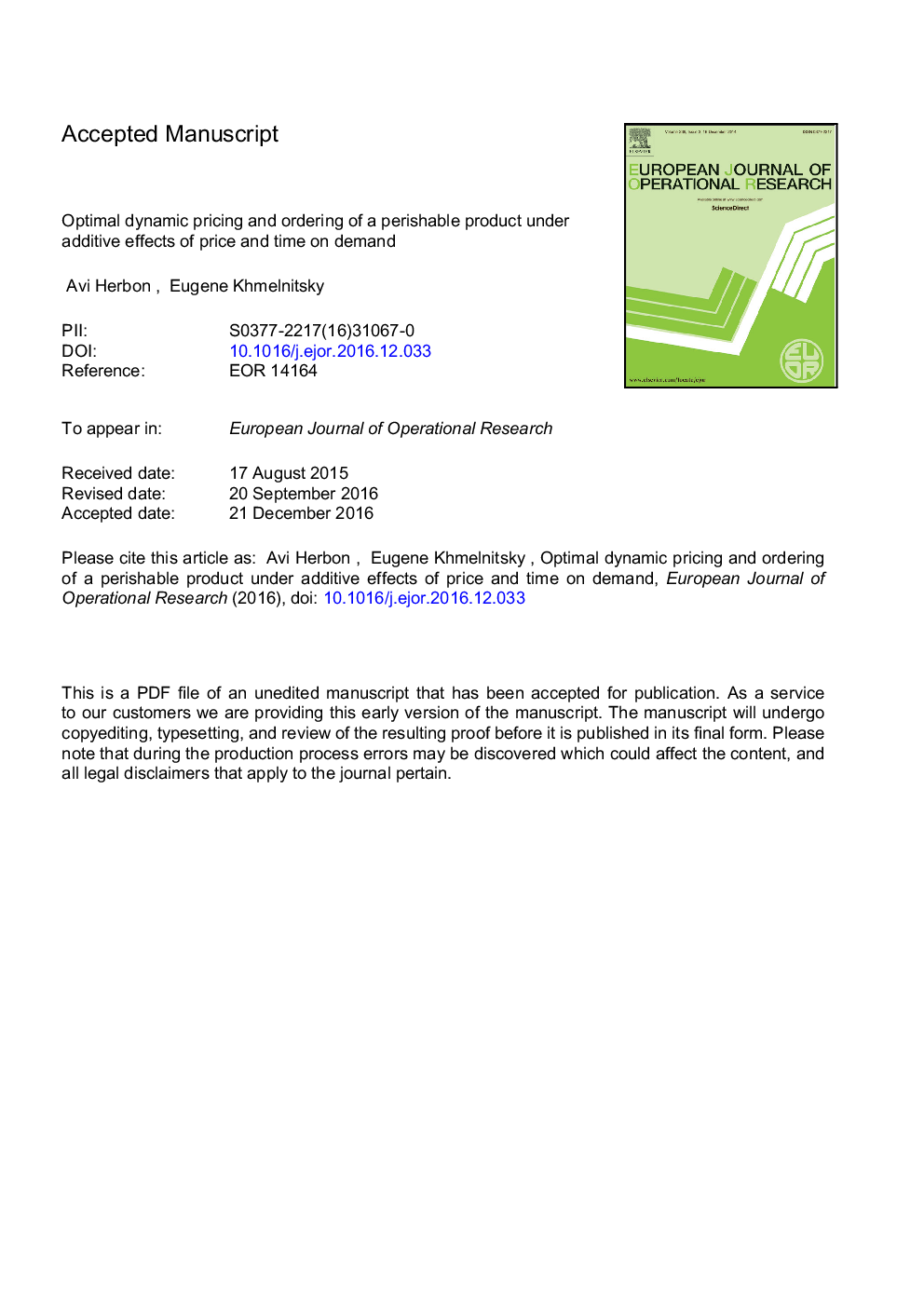| Article ID | Journal | Published Year | Pages | File Type |
|---|---|---|---|---|
| 4959848 | European Journal of Operational Research | 2017 | 32 Pages |
Abstract
When perishable products, such as dairy products, fruits and vegetables, drugs, or batteries are priced uniformly, without taking into consideration the amount of time remaining until the expiration date, consumers may gravitate towards fresher products, leaving some inventory unsold. A dynamic pricing policy, in which products are priced differently as they approach expiration, may encourage customers to buy less-fresh products, potentially increasing revenue and eliminating waste. Following scarce literature on dynamic pricing of storable perishable items, this paper develops a model to determine a product's optimal replenishment schedule and dynamic price over time, with the aim of maximizing the retailer's profit. Customer demand is assumed to be a pseudo-additive function of price and time since replenishment. Some properties of the optimal pricing and replenishment policy are derived by means of necessary and sufficient conditions of optimality. A number of examples show the dynamics of the optimal policy under different assumptions regarding demand. In particular, we evaluate the extent to which the retailer can benefit from the implementation of a dynamic pricing policy as opposed to a static one, and we show that the optimal policy is highly dependent on the form of demand incorporated into the model.
Related Topics
Physical Sciences and Engineering
Computer Science
Computer Science (General)
Authors
Avi Herbon, Eugene Khmelnitsky,
